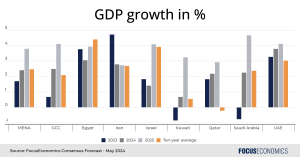Published
1 min ago
on
June 15, 2024 Article/Editing:
See this visualization first on the Voronoi app.
Mapped: The 10 Hottest and Coldest Countries in the World
This was originally posted on our Voronoi app. Download the app for free on iOS or Android and discover incredible data-driven charts from a variety of trusted sources.
This visualization shows the world’s hottest and coldest countries (and some territories) by their average temperature in 2022. Data for both the graphic and article has been sourced from the World Bank, accessed via Trading Economics.
Ranked: Average Temperature in 2022, by Country or Territory
Burkina Faso’s average annual temperature stands just past 29 °C (84.7 °F), making it the hottest country by this metric.
RankCountryAverage Temperature
(2022, °C)Average Temperature
(2022, °F) 1🇧🇫 Burkina Faso29.384.7 2🇲🇱 Mali29.284.6 3🇶🇦 Qatar29.184.4 4🇸🇳 Senegal29.084.2 5🇦🇪 UAE28.984.0 6🇲🇷 Mauritania28.984.0 7🇧🇭 Bahrain28.883.8 8🇦🇼 Aruba28.883.8 9🇩🇯 Djibouti28.683.5 10🇬🇲 Gambia28.583.3 11🇧🇯 Benin28.182.6 12🇲🇻 Maldives28.182.6 13🇬🇼 Guinea-Bissau28.182.6 14🇰🇾 Cayman Islands28.082.4 15🇴🇲 Oman27.982.2 16🇲🇭 Marshall Islands27.982.2 17🇰🇮 Kiribati27.882.0 18🇬🇭 Ghana27.781.9 19🇸🇬 Singapore27.781.9 20🇳🇪 Niger27.681.7 21🇰🇼 Kuwait27.681.7 22🇸🇩 Sudan27.681.7 23🇬🇺 Guam27.581.5 24🇵🇼 Palau27.581.5 25🇼🇸 Samoa27.581.5 26🇹🇬 Togo27.581.5 27🇫🇲 Micronesia27.581.5 28🇰🇳 St Kitts & Nevis27.381.1 29🇦🇸 American Samoa27.381.1 30🇹🇩 Chad27.381.1 31🇰🇭 Cambodia27.381.1 32🇲🇵 Northern Mariana Islands27.381.1 33🇱🇰 Sri Lanka27.281.0 34🇳🇬 Nigeria27.281.0 35🇸🇨 Seychelles27.180.8 36🇸🇴 Somalia27.180.8 37🇦🇬 Antigua and Barbuda27.180.8 38🇨🇮 Ivory Coast26.880.2 39🇻🇮 Virgin Islands26.880.2 40🇱🇨 St Lucia26.880.2 41🇹🇭 Thailand26.880.2 42🇩🇲 Dominica26.780.1 43🇸🇱 Sierra Leone26.679.9 44🇵🇭 Philippines26.679.9 45🇸🇷 Suriname26.579.7 46🇪🇷 Eritrea26.579.7 47🇸🇦 Saudi Arabia26.579.7 48🇹🇹 Trinidad and Tobago26.579.7 49🇧🇧 Barbados26.579.7 50🇲🇾 Malaysia26.479.5 51🇬🇩 Grenada26.379.3 52🇬🇾 Guyana26.279.2 53🇨🇺 Cuba26.179.0 54🇧🇸 Bahamas26.179.0 55🇯🇲 Jamaica26.078.8 56🇻🇨 St Vincent & the Grenadines26.078.8 57🇮🇩 Indonesia26.078.8 58🇬🇳
